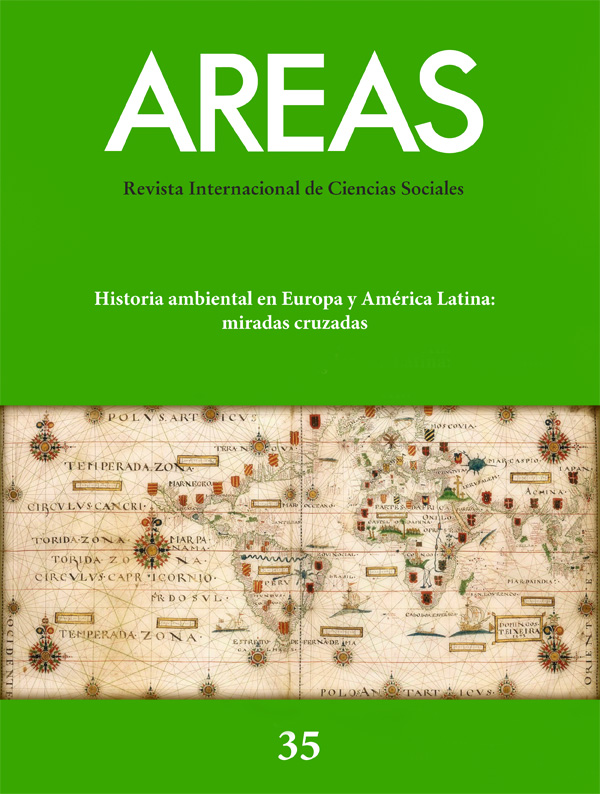Ambiente, producción y mercado. El impacto transformador en una economía periférica, el Gran Chaco Argentino en el siglo XX
Resumen
Hacia fines del siglo XIX había en Argentina más de 100 millones de hectáreas de bosques, montes y selvas originales. En menos de medio siglo el país perdió más de dos tercios de su patrimonio forestal autóctono. Hoy le quedan menos 33 millones de hectáreas forestales nativas. La explotación de la esta extraordinaria riqueza forestal Argentina, es el punto de partida de este análisis histórico que se propone aportar una mirada desde la perspectiva histórico-ambiental referida a la evolución de la explotación agro-forestal en el siglo XX y su relación con la expansión del modelo de agricultura capitalista. El objetivo central será, entonces, el estudio de este proceso deforestador en el contexto de su incorporación al mercado y la relación que se establece entre el mismo y la expansión de la frontera agrícola, su transformación artificial, conflictos, grados de especialización, racionalidad, interacción y el deterioro progresivo de los recursos forestales.
Descargas
-
Resumen1110
-
PDF1233
Las obras que se publican en esta revista están sujetas a los siguientes términos:
1. El Servicio de Publicaciones de la Universidad de Murcia (la editorial) conserva los derechos patrimoniales (copyright) de las obras publicadas, y favorece y permite la reutilización de las mismas bajo la licencia de uso indicada en el punto 2.
2. Las obras se publican en la edición electrónica de la revista bajo una licencia Creative Commons Reconocimiento-NoComercial-SinObraDerivada 3.0 España (texto legal). Se pueden copiar, usar, difundir, transmitir y exponer públicamente, siempre que: i) se cite la autoría y la fuente original de su publicación (revista, editorial y URL de la obra); ii) no se usen para fines comerciales; iii) se mencione la existencia y especificaciones de esta licencia de uso.
3. Condiciones de auto-archivo. Se permite y se anima a los autores a difundir electrónicamente las versiones pre-print (versión antes de ser evaluada) y/o post-print (versión evaluada y aceptada para su publicación) de sus obras antes de su publicación, ya que favorece su circulación y difusión más temprana y con ello un posible aumento en su citación y alcance entre la comunidad académica. Color RoMEO: verde.






